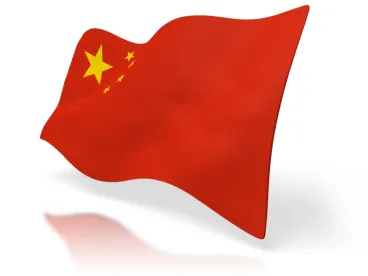It is no secret that China has long struggled with implementing measures for pollution control and regulating hazardous chemicals. We have watched this issue closely and published about it in years past here. However, on May 24, 2022, the China State Council issued its most focused plan yet, known as the “New Pollutant Control Action Plan” or “新污染物治理行动方案,” and it will likely have far-reaching impacts on companies manufacturing, using or discharging certain chemicals in China. It could also impact companies outside of China importing chemicals into China.
This plan was born out of the 14th Five-Year Plan for National Economic and Social Development and the Long-Term Goals for 2035, along with the 14th Five-Year Ecological and Environmental Monitoring Plan issued by the Ministry of Ecology and Environment (MEE). The New Pollutant Plan sets a goal to complete environmental risk screening of chemical substances of high concern and high production (use) by 2025. Other goals include releasing a list of key “new pollutants” for regulation and control; enacting emission restrictions on those pollutants; and improving the enforcement mechanisms for compliance with those restrictions.
In fact, the Plan states that before the end of 2022, the MEE will be responsible for publicizing the plan on risk assessments on priority chemical substances and will release an initial list of key new pollutants. Before the end of 2023, the MEE will complete the first round of risk assessments on priority chemical substances and first round of surveys on basic information of chemical substances.
According to Ren Yong, the Director of the Solid Waste & Chemicals Department within MEE, “new pollutants refer to those toxic and harmful chemicals with characteristics such as biological toxicity, environmental persistence, and bioaccumulation.” The MEE official clarified during a press conference in March 2022 that new pollutants will be distinguished from “familiar pollutants such as sulfur dioxide, nitrogen oxides, PM2.5 and other conventional pollutants. . . . [T]here are many types of new pollutants, and the more important feature is ‘new’ because the number of new pollutants is likely to continue to increase.”
Four categories of new pollutants will be the focus of the Plan and MEE’s initial risk assessments, which is in line with international practice:
-
persistent organic pollutants;
-
endocrine disruptors;
-
antibiotics; and
-
microplastics.
According to the Plan, the MEE will be tasked with various pilot projects for treating priority pollutants in environmental media, starting with testing the Yangtze River, Yellow River, and other basins around key drinking water sources. However, the Plan also directs the MEE to gather information in key industries from companies that produce, process, use, or discharge priority chemicals. The Plan states that the MEE should carry out “basic information surveys” and “detailed investigations” on production, processing, use, discharge, etc. of priority chemicals. This may lead to a series of information requests from the MEE to producers, processors and importers of various high-risk chemicals.
Moreover, companies that discharge key new pollutants may be required to take certain pollution control measures to meet pollutant discharge standards (once set) and environmental quality target requirements as part of their discharge permits. Such permits could also require regularly conducting environmental monitoring, rectifying unpermitted discharges and disclosing certain information to the MEE.
Similarly, the Plan strives to implement new requirements for the collection, utilization and disposal of wastes which may contain new pollutants including medical waste, pesticides, and antibiotic-related waste. The Plan contemplates that some new pollutant control measures may include complete prohibition or significant restriction on new pollutants. Again, this could affect companies importing various chemicals into China in the coming years.
Finally, the Plan emphasizes the need to strengthen supervision and enforcement of the new pollutant control requirements, once developed. The Plan also promotes financial supportive measures, including preferential tax for new pollutant treatment. Interestingly, the Plan also encourages the MEE to guide financial institutions to increase credit to companies who develop new pollutant treatment and even goes so far as to ask that the MEE guide the public to adopt support for the concept of green energy.
With all of the above, we anticipate that the MEE will develop technical rules, guidance, and regulations so that companies can comply with the goals of the Plan and new pollutant monitoring framework. However, once the new pollutants list is released (anticipated at the end of 2022), it will be important for companies who manufacture, import, process and discharge chemicals in or around China to take a closer look at this list, ensure that appropriate records on those chemicals are being maintained, and determine whether any business risk is associated with continuing to produce, use, process, import, or discharge said chemicals.




 />i
/>i

